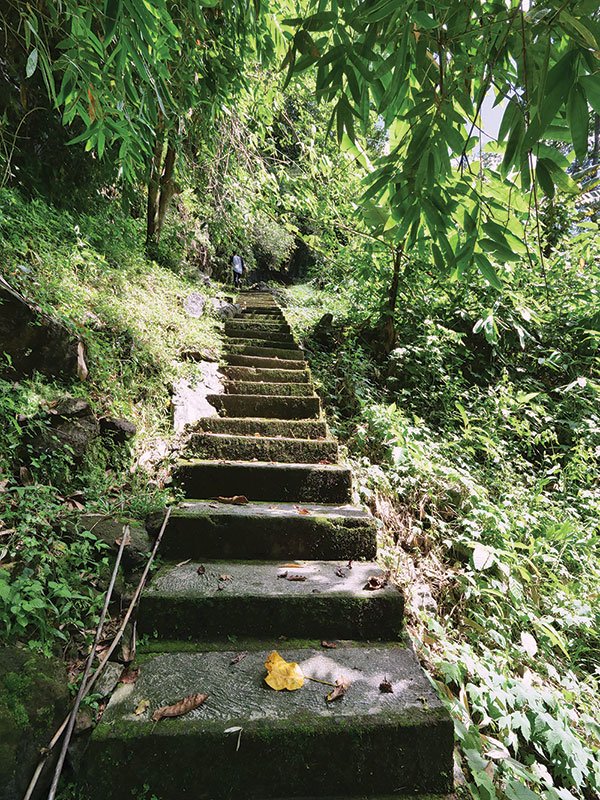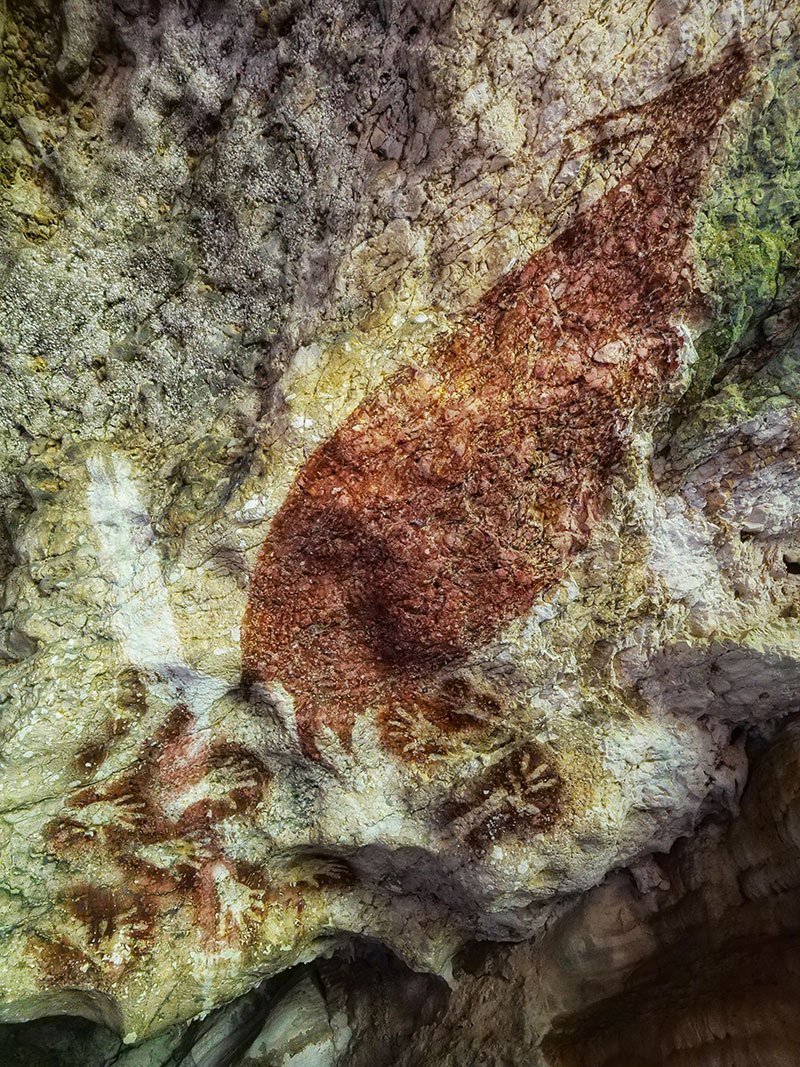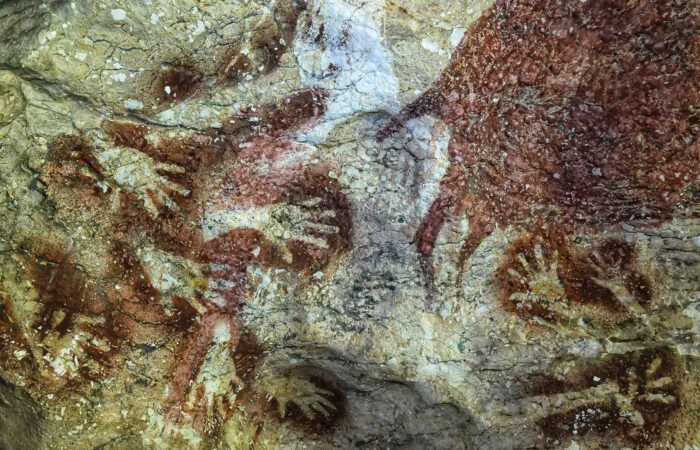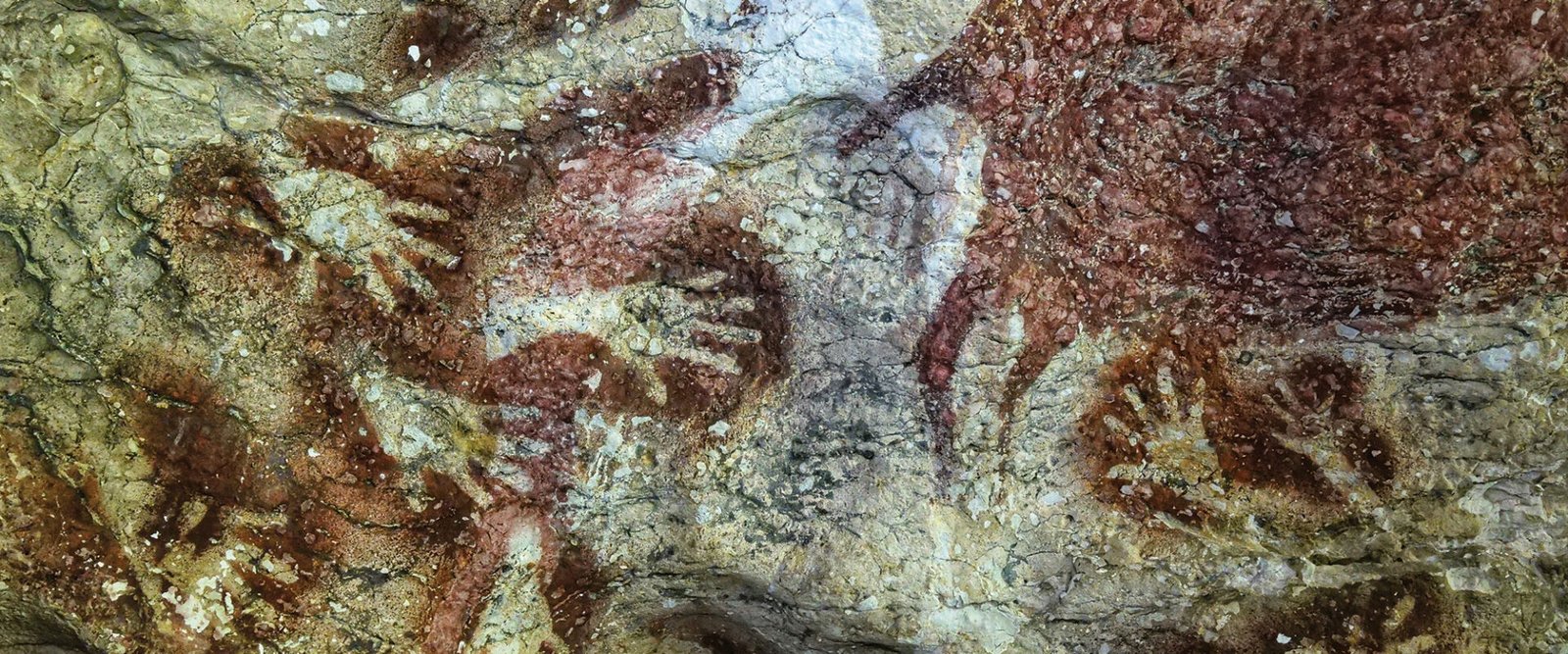Stepping 1000 Stairs Toward a Prehistoric Age
Word: Ayu Arman
Sumpang Bita Cave is located in Kampung Sumpang Bita, Balocci Sub-district and is included in the area of Bantimurung National Park, Bulusaraung (TN – BABUL).
A park that has a variety of karst uniqueness, prehistoric caves with beautiful stalactites and stalagmites, and a variety of species and colors of butterflies. By Alfred Russel Wallace, Bantimurung is dubbed as the Kingdom of Butterfly. I had the opportunity to climb the Sumpang Bita Cave, one of the prehistoric caves in Pangkep.
Upon entering the gate of the prehistoric park of this Sumpita Cave, I were immediately greeted by garden with green trees, neatly arranged grass and stone garden, and various types of flower and butterfly flying to and fro.
I walked approximately 1 kilometer from the park to the stairs. Since the cave is located in limestone hills at an altitude of 280 meters above sea level, I had to step 1000 stairs.

Of course, down the rock stones up to hundreds of meters requires extra energy. However, along the 1000 steps up to this prehistoric cave, I enjoyed the expanse of green grass, towering mossy cliffs, neatly lined trees, and the cool air that made the feelings calmer.
Stepping deep into the cave, I felt like I was entering an ancient aisle. The staircase is flanked by big trees on its right and left. Their energy is both refreshing and frightening. I felt like I was in a place full of animals. On each of the stairs I stepped, I found dozens of Centipedes scattered here and there. Perhaps, due to the hugh number of Centipedes, this Sumpang Bita Cave is often called the Centipede cave.
I suggest to not coming here alone. It is because Sumpang Bita park is so vast, let alone the status it bears as an archaeological site. However, do not hesitate to frame the moment of its natural purity and oddity.
Should you be tired, you may rest on a small gazebo provided on every three hundred stairs. On the 600th stair, there is a pool of very clear and fresh water. According to our guide, in the vicinity of these karst mountains there are two rivers which flow through this cave region, namely Mangemba and Padanglampe.
The journey was not finished there. A few meters up, I saw a signpost to the Bulu Sumi Cave, and I continued our step. Finally, I arrived at the altitude of 200 meters, where the Bulu Sumi Cave is located. Unfortunately, I can not explore this cave since it is steep and vertical. I also needed lighting such as handlamp due to the darkness.
According to archaeological data, this cave has a 4 meters width and 8.77 meters depth. Bulu Sumi is included in thick-sheets cave type in horizontal shapes with a relatively flat floor surface on the front and a smooth ground structure.
In this cave, you can see eight red hand print paintings, lithic tools, pottery, stone artefacts, fragments of pottery, and mollusc shells. Artifacts and prehistoric objects are scattered on the floor of the cave. In addition, there are also shells as food remains sticking to the ground and to stalagmites.
It is said that this cave was a kitchen for ancient humans who inhabited this place. The local people call them Toala. “To” means human, while “ala” means forest. So, Toala means forest men. The existence of this cave is associated with the Sumpang Cave located on top of it and supposedly used as a ritual room of Toala community.
I also continued our step to the end of staircase, the 1000th stair, at an altitude of 280 meters. Exactly in front of it, there is a boulder of large and high rock which is the mouth of this Sumpang Bita cave.
Let’s go in.
This cave has a depth of about 24 meters with a height of approximately 12 meters. Its high ceiling slopes backward. In the cave hall, you can see the process of how stalagmites and stalagtites are formed as a result of water permeation and travertine processes. On the walls are visible range of wall paintings (rock art).
I noted that in the northern hall, there is a painting of a jumping babirusa. Almost every corner of the wall was filled with hand and foot prints paintings. There are 25 handprint paintings. There were also paintings of canoes, boats, and unidentified red streaks. In archaeological records, in addition to wall paintings, in this cave are also found human bones and teeth, clamshells, plain earthenware fragments, and geometric jewelry.
Certainly, the existence of various paintings of rocks and objects in this cave becomes an evidence and statement given by nature that at a distant period, there was human life. Since prehistoric caves are one of the archaeological data which are to date can be found on a number of cave sites in the world, especially in areas which once inhabited by early humans.

One of the early types of human who started their life in caves is the Neanderthal who appeared in Europe approximately 100 thousand years ago. The cave paintings then grew in about 4,000 years ago along with the appearance of Cro-Magnon men in Europe, especially in France and Spain. This type of men is considered as the first human artist in the world since they have the ability to express their sense of art through the form of drawings, scratches, and carvings imprinted on the walls of caves.
In Indonesia, a cultural product in the form of cave paintings is found in Papua, Maluku, East Nusa Tenggara, Kalimantan, and Sulawesi. The existence of cave paintings in Indonesia was first reported by J. van Olderborgh in 1882.
Olderborgh reported on the cave paintings found in Berau Bay, Papua. This research was followed by reports of D. F. van Braam Moris in 1884 and E. Metze in 1885. However, the reports on the cave paintings in this area was written by J. Roder who joined in Frobenius expedition of 1937-938 and published in 1959.
Special researches on cave paintings in Sulawesi were first performed by two brothers, Paul and Fritz Sarasin, in 1902-1093 in southern Sulawesi. Then, the recording then was followed by P.V. van Stein Callenfels in 1933, C.H. M. Heern-Palm and H.R. van Heekeren in 1950, C.J.H Franssen in 1958, Mulvane 1970, and R. P. Soejono in 1977. Researches were also conducted in Southeast Sulawesi by E. A. Kosasih since 1978.
The study was then continued by the National Archaeological Research Center in 1991, 1994, 1995, and 1996. Based on their research, it is known that cave paintings in Indonesia are still relatively young except for cave paintings in South Sulawesi, especially in caves of Maros and Pangkep regions. The cave drawings in this region based on the C-14 dating are assessed as the oldest paintings in Indonesia dated from 10,500 to 5,000 years ago.
The most common painting objects in caves of Maros and Pangkep regions are handprint paintings. The paintings were made by stretching hands on the cave wall to be then sprinkled or sprayed with a particular liquid.
The paint-like sprinkle or spray substance colored the area around the hand. This kind of handprint painting is called a negative handprint. On the other hand, a handprint painting created by using technique ofpouring some paint on the palm of the hand to be then stamped to the cave wall is called a positive handprint painting.
There are more or less 326 different handprint paintings scattered in 12 caves in Pangkep. Of the 12 caves analyzed, the most numerous handprint paintings is found in Sumpang Bita Cave, namely 81 images. Then it is followed by Garunggung with 48 paintings, Cumi Lantang with 47 paintings, Camingkana with 36 paintings, Saluka with 33 paintings, Sakapoa with 24 paintings, Sassang with 15 paintings, Pattenungan with 12 paintings, Batang Lamara with 10 paintings, Bulu Sumi with 9 paintings, Kassi with 9 paintings, and Lampoa with 2 paintings.

Adam Brumm, an archaeologist from the Center for Archaeological Sciences of the University of Wollongong, Australia, argues that handprint paintings of complete and incomplete fingers in red backgrounds in caves of Maros-Pangkep region describe that early modern human civilization inhabiting the mainland of Sulawesi had already known rock art like in Europe.
The age of handprint painting in caves of these two regions is thought to be similar to the emergence of Austromelanesoid race in the mainland of Europe, that is also characterized by traces of cave paintings.
Dr. Maxime Aubert from Griffith University in Queensland, Australia, states that one of the cave paintings in Maros-Pangkep, South Sulawesi, has a minimum age of 39,900 years. It is older than cave paintings found in Europe which are estimated to be 30 to 35 thousand years old.
The discovery shows that Indonesian ancestors had been drawing since 40,000 years ago. Rock art, or can also be called cave art, is a form of abstract thinking in the past. They expressed what were in their minds in the form of paintings. It is very likely that rock art had emerged and flourished when early modern human spread from Africa to Europe and Southeast Asia.
Therefore, Sumpang Bita and Bulu Sumi caves are just two of the prehistoric caves in Pangkep mainland which provide evidence of a series of past lives from which current life originated. These prehistoric caves are very important in the history of the development of human culture, not only for people living in South Sulawesi, but also for all mankind.

